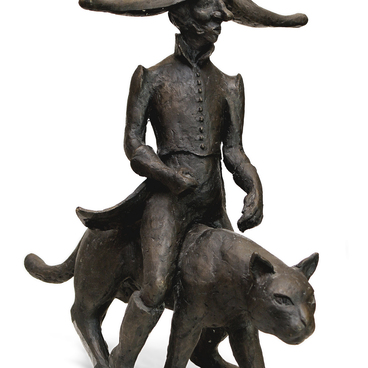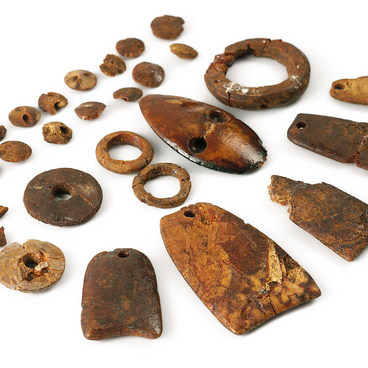The doll “Don Juan” from the museum’s collection was created by Inna Nikolayevna Sadauskene as part of the composition “Don Juan and Donna Anna”. This doll is made as a full-length male figure, leaning on a column, and dressed in an elegant men’s costume of the 16th–17th centuries. The doll has a magnificent beret with a feather on its head. The composition was first presented at the annual art project “Hoffmaniana”.
Inna Nikolayevna supplemented the composition with a fragment of a city street with facades of houses that rise above an arched bridge. In the center is the facade of a building in the Empire style with a triangular pediment, a portico of five white columns and a small chimney above the portico on the left.
Inna Sadauskene fixed full-length dolls of the Austrian composer Wolfgang Amadeus Mozart and German romantic writer Ernst Theodor Amadeus Hoffmann on rectangular pedestals at both sides of the architectural backdrop. At the foot of the latter is a small figure of a cat.
The German writer completed the story “Don Juan” in Bamberg in September 1812, just days after his breakup with Julia Mark, whom he was in love with. The work was an interpretation of Mozart’s opera bouffa. The opera, which consists of two acts and ten scenes, was premiered at the Soslovny Theater in Prague in 1787, when Ernst Hoffmann was 11 years old.
The work of the German writer was printed in the Leipzig weekly “General Musical Gazette”, in the issue of March 31, 1813; a year later the story appeared in the collection “Fantasy Pieces in Callot’s Manner” — the first published book of the author. Ernst Theodor Amadeus Hoffmann offered a new interpretation of the “eternal image” of Don Juan, a titanic personality akin to Faust.
Donna Anna who was
supposedly attracted to the famous seducer by an insatiable craving for an ever
elusive ideal, was brought to the forefront of Mozart’s opera. This
interpretation gained wide popularity among such romantic poets such as Alfred
de Musset and Nikolaus Lenau.


